Top Rankings
Ardmore School District ranks among the top 20% of public school district in Oklahoma for:
Category
Attribute
Diversity
Most diverse schools (Top 1%)
Community Size
Largest student body (number of students) (Top 1%)
For the 2025 school year, there is 1 public middle school serving 326 students in Ardmore School District. This district's average middle testing ranking is 1/10, which is in the bottom 50% of public middle schools in Oklahoma.
Public Middle School in Ardmore School District have an average math proficiency score of 4% (versus the Oklahoma public middle school average of 21%), and reading proficiency score of 15% (versus the 24% statewide average).
Minority enrollment is 75% of the student body (majority Hispanic), which is more than the Oklahoma public middle school average of 55% (majority Hispanic and American Indian).
Overview
This School District
This State (OK)
# Schools
6 Schools
605 Schools
# Students
2,617 Students
205,206 Students
# Teachers
118 Teachers
12,888 Teachers
Student : Teacher Ratio
22:1
22:1
District Rank
Ardmore School District, which is ranked within the bottom 50% of all 533 school districts in Oklahoma (based off of combined math and reading proficiency testing data) for the 2021-2022 school year.
The school district's graduation rate of 83% has increased from 71% over five school years.
Overall District Rank
#410 out of 538 school districts
(Bottom 50%)
(Bottom 50%)
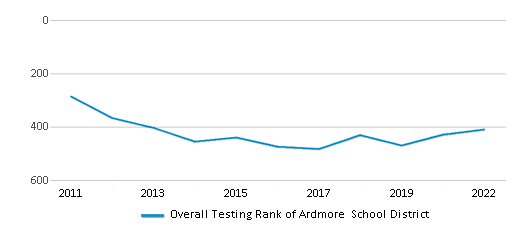
Math Test Scores (% Proficient)
13%
25%
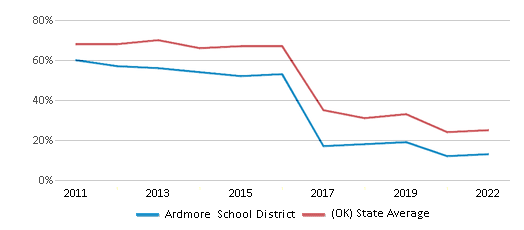
Reading/Language Arts Test Scores (% Proficient)
20%
27%
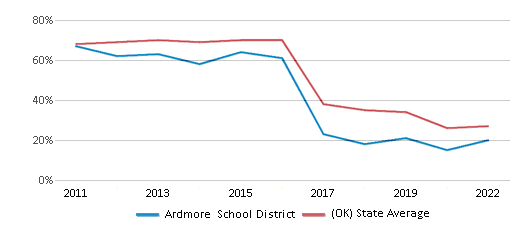
Science Test Scores (% Proficient)
23%
31%
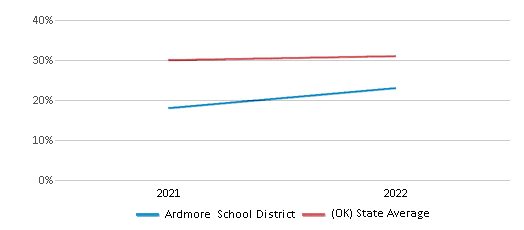
Graduation Rate
(20-21)83%
78%
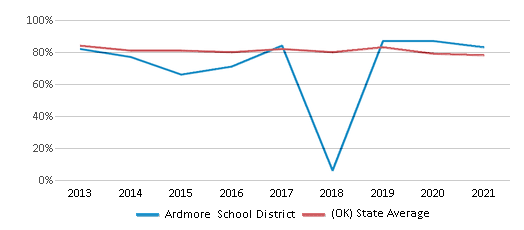
Students by Ethnicity:
Diversity Score
0.78
0.73
# American Indian Students
224 Students
27,037 Students
% American Indian Students
9%
13%
# Asian Students
26 Students
3,463 Students
% Asian Students
1%
2%
# Hispanic Students
670 Students
38,007 Students
% Hispanic Students
26%
19%
# Black Students
296 Students
15,143 Students
% Black Students
11%
7%
# White Students
773 Students
92,862 Students
% White Students
29%
45%
# Hawaiian Students
n/a
806 Students
% Hawaiian Students
n/a
n/a
# Two or more races Students
616 Students
27,840 Students
% of Two or more races Students
24%
14%
Students by Grade:
# Students in PK Grade:
123
6,503
# Students in K Grade:
208
7,350
# Students in 1st Grade:
214
7,518
# Students in 2nd Grade:
206
7,470
# Students in 3rd Grade:
216
7,467
# Students in 4th Grade:
217
7,161
# Students in 5th Grade:
183
11,503
# Students in 6th Grade:
177
38,940
# Students in 7th Grade:
154
53,730
# Students in 8th Grade:
172
55,226
# Students in 9th Grade:
180
2,128
# Students in 10th Grade:
206
76
# Students in 11th Grade:
181
63
# Students in 12th Grade:
180
71
# Ungraded Students:
-
-
District Revenue and Spending
The revenue/student of $13,198 is higher than the state median of $10,983. The school district revenue/student has stayed relatively flat over four school years.
The school district's spending/student of $12,838 is higher than the state median of $10,957. The school district spending/student has stayed relatively flat over four school years.
Total Revenue
$35 MM
$7,919 MM
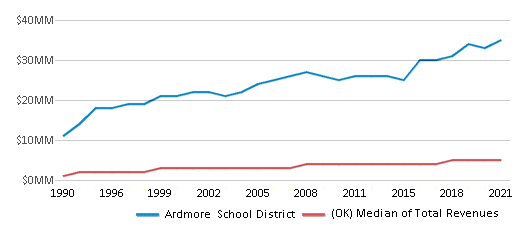
Spending
$34 MM
$7,900 MM
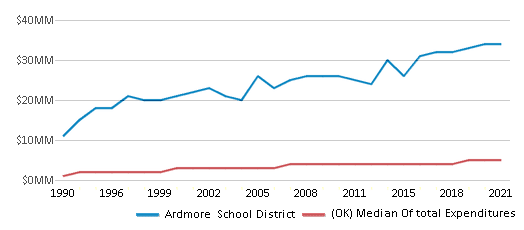
Revenue / Student
$13,198
$10,983
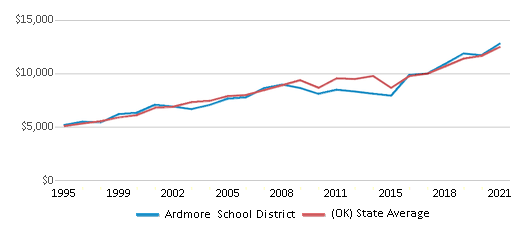
Spending / Student
$12,838
$10,957
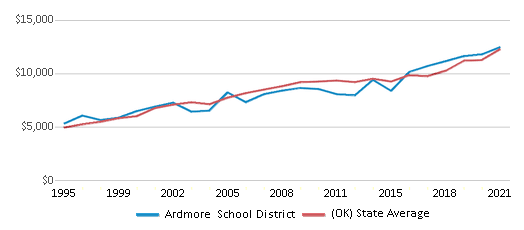
Best Ardmore School District Public Middle Schools (2025)
School
(Math and Reading Proficiency)
(Math and Reading Proficiency)
Location
Grades
Students
Rank: #11.
Ardmore Middle School
(Math: 4% | Reading: 15%)
Rank:
Rank:
1/
Bottom 50%10
511 Veterans Blvd
Ardmore, OK 73402
(580) 223-2475
Ardmore, OK 73402
(580) 223-2475
Grades: 7-8
| 326 students
Recent Articles

Year-Round Or Traditional Schedule?
Which is more appropriate for your child? A year-round attendance schedule or traditional schedule? We look at the pros and cons.

Why You Should Encourage Your Child to Join a Sports Team
Participating in team sports has a great many benefits for children, there is no doubt. In this article you will learn what those benefits are.

White Students are Now the Minority in U.S. Public Schools
Increasing birth rates among immigrant families from Asia and Central and South America, combined with lower birth rates among white families, means that for the first time in history, public school students in the United States are majority-minority. This shift in demographics poses difficulties for schools as they work to accommodate children of varying language abilities and socio-economic backgrounds.





